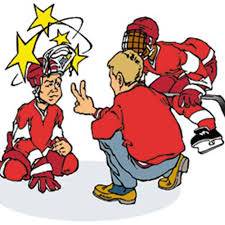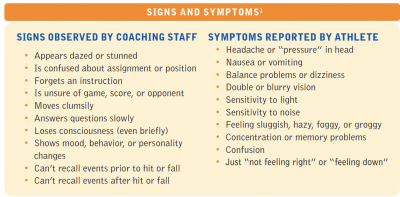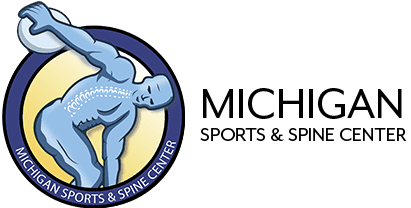CONCUSSIONS DANGERS – NEW PROTOCOLS TO KEEP ATHLETES SAFE

CONCUSSIONS DANGERS – NEW PROTOCOLS TO KEEP ATHLETES SAFE
Participation in sports is an important part of physical, mental, and social development for our youth. While it is meant to promote health, sports carry an inherent risk of injury.
Evidence is growing that the short and long-term health risks associated with brain trauma in sports are more serious than previously known. While concussions have been the primary focus of the medical community, the media, and the sports world, it appears they are only part of the problem. A growing number of studies show the risk of short-term and long-term brain damage, and neurodegenerative disease may be more closely related to an athlete’s cumulative brain trauma over their lifetime. This brain trauma includes both concussions and subconcussive impacts, which are rapid movements of the head that don’t cause any concussion symptoms.
Studies are now finding that some athletes who have received subconcussive impacts, but have never shown any concussion symptoms, still have abnormal findings on certain tests of brain structure and function. It is not yet clear if these results were caused by too many impacts in a day, a season, a year, and even a lifetime, but one thing is clear: hits to the head are dangerous and more needs to be done to protect athletes.
WHO’S AT RISK FOR CONCUSSIONS? Concussions are an issue at all levels in many sports. Statistics from the Centers for Disease Control and Prevention show that among high school athletes, boys’ ice hockey poses the second highest rate of concussions, after only football. The prevalence of concussions in youth hockey is surprisingly similar to concussion estimates in the NHL (23 per 1000 player-game hours).
One factor found in a videotape analysis of bantam players is that on-ice skating characteristics helped explain why certain players sustain concussions. These players tended to skate with their heads down watching the puck, positioning themselves in the “danger zone,” which is between 8-16 feet from the boards, and they didn’t optimally position their body to receive a check. Thus, when checked, these players were more often flung into the boards; and collisions too often occurred when their heads were down. Many coaches are working in practice to reduce this style of play; equipment manufacturers are finding ways to increase protection and rinks are installing safety features in the ice; but this type of injury happens to even the best and most experienced players.
The concussion problem goes all the way up the National Hockey League. The NHL is facing multiple lawsuits from former players alleging that it improperly handled concussions and other brain injuries and didn’t do enough to protect them from the long-term dangers of concussions. The suits are similar to the class action complaint against the NFL, which did reach a substantial settlement. This just proves that training and education needs to be implemented at every level of hockey.
WHAT CAN YOU DO? Educate yourself on the signs and symptoms of concussions and be sure your coaches and trainers have the same, and they have protocols in place if an injury of this type occurs.
WHAT ARE THE SIGNS/SYMPTOMS OF A CONCUSSION?

WHAT TO DO IF THERE ARE SIGNS OF CONCUSSION?

WHEN IS IT SAFE TO RETURN TO PLAY?
All athletes who sustain a concussion, no matter how minor, should undergo an evaluation by a qualified healthcare provider like Michigan Sports & Center before returning to play. In some instances, clearance from your primary care doctor may not be enough. There are many factors that determine when an athlete is safe to return to play. We have very specific protocols that measure an athlete’s responses at different levels of rest and activity; and in some cases other therapy may be needed. Not until they are completely free of all symptoms and remain symptom free during and after physical testing, is it safe to return to play. If you are unsure, please call us to schedule a consultation. Our goal is to get athletes back in the game as soon as possible only when it won’t risk further injury. I also encourage you to talk to your coaches and trainers to make sure they are up-to-date on the latest protocols to keep athletes safe.
To schedule an appointment or consultation about concussions or any sports injury or rehabilitation protocols, contact Dr. Pierce at 248-680-9000, drjeffpierce@gmail.com or at www.MichiganSportsandSpine.com. If there is a topic you would like to see covered, or you have a question for The Sports Doc, please submit them to drjeffpierce@gmail.com.
ABOUT MICHIGAN SPORTS & SPINE CENTER:
We’re innovative leaders utilizing cutting-edge technologies such as musculoskeletal ultrasounds, PRP, stem cell treatment, and other innovative procedures. Michigan Sports & Spine Center is committed to resolving your pain, not simply masking it. We treat the whole body, not just the injury, and perform preventative treatment so your injury doesn’t come back. Our studies prove that Michigan Sports & Spine Center has patient success rates much higher than the national average. We treat everyone from high-profile athletes to your neighbor next door. Our primary focus is getting our patients back into the game of life!
